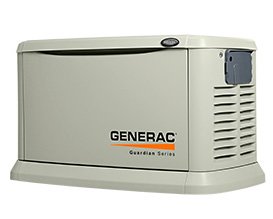Solar Panel Installation
(800)779-3848
Solar Panel Installation
RCS Electrical Services is your solar panel installation expert. Contact us for panel installation, inverter installation, solar energy system design, green home design ideas, off grid, grid-tied systems and all other solar energy needs.
A Case For Solar Panel Installation
The average US household consumes 1500KWh of electrical energy per month. The electric utilities are more than happy to charge us at the average rate of .12 cents per KWh.
The utilities are rude, offer poor service, demand high deposit fees, and would disconnect your power and leave you in total darkness if you are late to pay your bill, not caring if you have infants or an elderly person at home.
Install solar panels on your roof or at ground level, produce your own electricity, become self sufficient and stop giving your money to the utilities that are often not caring nor sensitive to your needs. Instead of you paying them, learn how you can make them pay you. I will show you how you can drastically cut your utility bills and leave extra money in your pocket every month.
If you roof slopes to the south, or you have a ground level area that you can dedicate to the installation of solar panels, I urge you to consider making the decision, to install a solar energy system on your property now.
Click here to request a solar panel installation consultation
Federal Government Will Pay You to Make Solar Panel Installation At Your Home Or Business
As of today, the Federal Government issues a 30% tax credit to all individuals or corporations that install a solar energy system in their homes or places of business. This tax credit is given at the time you file your income tax returns. Contact us if you want to learn more about the tax benefits of installing one of these systems.
Abundant Solar Energy For All
Our world receives from the sun 1,541,000,000,000,000,000 kW/h of free energy per year. This is roughly 14,000 times the amount of energy our entire world consumes in one year. In two hours the sun gives more energy, than the entire world consumes in year.
While we pay heavily for the energy we use today, solar energy is free. We encourage you to make a decision to utilize this free source of energy, and harvest all that you can. You will benefit from it financially, while doing something good for the environment and your community.
Solar Energy Yesterday And Today
It was the year 1839 when a French physicist, Alexandre Edmond Becquerel, discovered what is known today as "photovoltaic effect." Photovoltaic effect is the ability of some semiconductors, like silicon, to convert solar energy into electricity. When irradiated by sun light, their electrons are energized and orbit more rapidly around their nuclei. Some of them knock adjacent electrons creating a random flow of electricity within the semiconductor. When designed properly, this random electron flow can be channeled to flow in an orderly fashion, creating an electrical current that can be useful for powering today's modern appliances, machines, and other electrical devices.
Today, this principle governs the solar energy industry, which has developed powerful solar panels that can convert solar energy into electricity. Still at this moment we are considered to be in the infancy of this potentially game changing industry.
There are three basic types of solar panels in use today, mono-crystalline, poly-crystalline, and amorphous silicone.
Types Of Solar Panels
Mono-crystalline Solar Panels
Mono-crystalline panels are known for their deep ocean blue color. They are made from single cuts of silicone ingots called wafers. These wafers are later sandwiched onto solar panels, each of them being called a cell. Mono-crystalline panels more efficient and reliable than other types of solar panels in used today.
Poly-crystalline Solar Panels
These panels are not made from a single ingot of silicone, but from the remains of several pieces of silicone ingots. Hence their appearance of multiple hues of bluish color.
These panels are well regarded in the industry as they are considered a less expensive alternative to the mono-crystalline types. These solar panels often come with warranties that span a period of up to 25 years.
Amorphous Silicone Solar Panels
These panels are at the cutting edge of the technology for solar panels. They are non-crystalline types of panels constructed by depositing a thin layer of silicone substrate onto a back plate of either glass or plastic material.
Amorphous silicone solar panels are less powerful and less expensive than their crystalline counterparts.
Thin film solar panels are a type of amorphous silicone panels. They have an advantage over other panels in that they are flexible and can be installed in all kinds of uneven surfaces. They can easily conform to irregular areas, and can be glued or fixed to almost any surface. Many times we see this panels glued to flat roofs, or ribbed metal roofs.
Choose this type of panels when you have large areas of metal roof that you want to cover with panels while keeping your investment low.
How Solar Panels Harvest Solar Energy
Solar panel installation is about harvesting or collecting solar energy and converting it into electrical energy.
When irradiated by sun light, their electrons are energized and orbit more rapidly around their nuclei. The random movement of the electrons turn into linear motion once the pass through the junction of two sandwiched solar cells, which only permit electron flow in one direction. As electrons move away from the silicon cell, they find a path through the electrical wires that connect one cell to the next, at some point leaving the solar panel through the wiring connected by the installer. This type of current flow is called direct current, since it flows in one direction only. In technical jargon it's called DC.
Once the electrons leave the solar array, they arrive at your inverter where the flow of current is converted into alternating current, which is type is used in most of the world today. In technical jargon this is called AC or alternating current.
Once your inverter process and convert this current, it is ready to be fed to your appliances, lighting, and electronic devices.
Solar Panels For Off Grid Applications
Today solar panels are powerful enough to support the electrical needs of modern households without the need to be connected to the electrical grid.
Contact us if you have questions about these applications.
Solar Panels For Grid Tied Applications
If you prefer to be connected to the electrical grid, then your electrical panels can send the extra energy that you don't consume, to the electric company. This allows you drastically reduce your electric bill.
One negative effect of connecting your solar panel this manner, is that when the utility line fail, your inveter and solar panels will shut down as well.
Contact us if you have further questions about this.
Solar Panels Support Components
There are other components that are part of your solar energy system. They allow your system to work correctly. These components are inverters, battery banks, battery charges, and other equipment necessary for the correct functioning of the entire system.
Solar Panels Inverters
Inverters are the component of the solar energy system dedicated to converting DC current from the solar panels to AC current that can be useful to your appliances and other electrical devices.
There are many types of inverters including Sunny Boy, Xantrex, Outback, and others.
Batteries Needed For Solar Panel Installation
If you need to store electrical energy, batteries are the best choice for this task. There are battery banks today that are very powerful and can give you a supply of electrical energy when the power lines fail.
Contact us to learn more about storage batteries.
Emergency Power System And Solar Panel Installation
Inverters and solar panels can work together and give you a supply of electrical energy when the electrical grid fails. Often times is more productive to make a solar panel installation, than it is to install a generator.
Generators are noisy, contribute to pollution, consume lots of fossil fuel, and require expensive maintenance every year. On the other hand, a solar panel installation harnesses clean, renewable, noise free, pollution free, and sustainable energy everyday of the year, unlike generators that just lay there until there is a power outage.
Generators cost you money, and solar panels contribute to your bottom line every day by saving money every month on your utility bill.
Contact us to learn more about solar panel installation used as an emergency source of energy.
13 KW HOME GENERATOR FOR SALE. TURNKEY INSTALLATION INCLUDED.
SPECIAL PRICING LIMITED TIME ONLY!!!
$14999.00
READ BELLOW FOR DETAILS
License Number ES12000317

